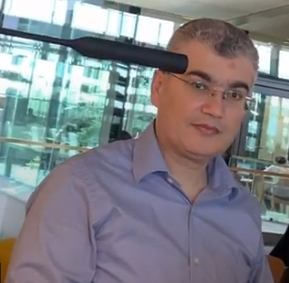Winning Hajj Healthcare competition by KAUST
Is KAUST well known?
King Abdullah University of Science & Technology (KAUST) is one of the top private universities in Thuwal, Saudi Arabia. It is ranked #=27 in QS WUR Ranking By Subject 2022.
What is the KAUST challenge?
KAUST is the first mixed-gender university campus in Saudi Arabia. LEARN MORE. Mission. Create crowdsourcing initiatives that challenges local and international talent to identify ideas and solutions for Saudi Arabia National Priorities.
What is KAUST famous for?
KAUST was Saudi Arabia's first LEED certified project and is the world's largest LEED Platinum campus.
Me and my team proposed a solution to solve more than an issue facing the ministry of Hajj in KSA in a competition by KAUST.

The above image show our hajj health tracker (8) nomiated in the top 11 finalist from 1300 presented solutions from 30 countries.

The pain points our solution was targeting
We use Mobile Apps (to be used by hajj supervisors & security guards), AI and medical grade bracelets to remotely monitor pilgrims 24/7 and provide live information to hajj supervisors on Web dashboards.
We then feed the pilgrims data to artificial intelligence models to predict sickness like syncope and heatstroke. In open areas (ex. Mina streets), guards can monitor pilgrims without causing jams by using smart glasses with mounted displays to show pilgrims personal & health details.
 Address heat stroke pain point using AI.
Address heat stroke pain point using AI.
Our solution plans to address the following pain points:
1) Health monitoring & control on-site This point is our main focus but from the collected pilgrim health data, we saw that we are able to address otherpoint no. 2 & 3. We designed a mobile app that is able to monitor vital health signs ( Blood pressure, Pulse rate, Body temperature, Oxygen level ) in addition to steps count for every pilgrim with the ability to retrieve data from 7 pilgrims at the same time using Bluetooth and send the collected data to the web-server dashboard for analysis and action by hajj officials.
With each pilgrim health data collected by our mobile app the GPS location of the App is recorded and this will help us to create pilgrim density maps for major hajj locations and can help us in tracing lost pilgrims based on their previous locations history.

Pilgrim health information will be collected on an hourly basis in closed areas (ex. Mina Camps, Arafat camps) but there might be some delays in open areas (ex. Metro Line, Masjid al-Haram, streets) for some pilgrims. The pilgrims data will be then fed to the AI models to detect potential syncope or heat strokes and alert hajj campaign supervisors for action. The mobile App can detect pilgrims who doesn't wear their bracelets for the last 2 hours and report their names to campaign supervisors.

The mobile App allows supervisors to send info and warning messages to pilgrim bracelets in their campaign. To monitor pilgrims in open areas and see if they are wearing their bracelets and check their health details without coming into close contact with them we plan to use smart glasses with head mounted display equipped with facial recognition to search for faces in the AI trained models and retrieve the pilgrim personal & health details and display it to the guards.
2) Mitigation of heat related health issues Heatstroke is a condition caused by your body overheating, as a result of prolonged exposure to or physical exertion in high temperatures. This most serious form of heatstroke, can occur if your body temperature rises to 40 C or higher. According to research reports the risk of heat stroke increase when both heart rate and body temperature increases and we are able to monitor both and alert hajj supervisors accordingly.
By knowing the time & location where most heat strokes occur, efficient heat mitigation can be implemented. We are able to alert hajj campaign supervisors about pilgrims whose body temperature and heart rate rise unexpectedly but reaching a single pilgrim in open and crowded areas might be challenging so we aim to use AI to predict that upfront to allow enough time for supervisors to take a corrective action.

3) Crowd Management [Third stage] To manage the crowd during the hajj, we need pilgrims density maps and those can be built by 2 methods:
The first will be by recording pilgrim locations using our mobile apps but maps created won't reflect the real time situation in open areas.There will be 3 to 4 hours delay - not much effect due to the slow movement of the pilgrim masses.
The second method that we started testing depend on using AI with live cameras to count pilgrims , our initial tests can be seen in our video. Those will be able to count an estimate pilgrims in major areas accurately and almost in real time.
Videos for our ready prototype: Mobile App Demo video : https://youtu.be/TGwq2jCja9U Arabic Web
I personally worked in a few environment related projects in makkah & Mina camp and I have acted as tech consultant to makkah municipality.

.png)
1.png)


.png)



